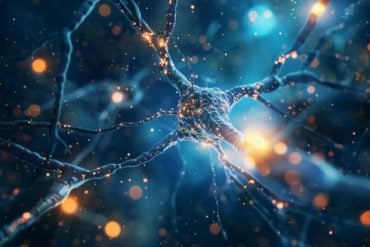Summary: Aging reduces sensitivity and discriminative ability for heat pain, but not pressure pain. Researchers compared pain perception in young and older adults using heat and pressure stimuli.
Older adults showed higher pain thresholds and lower sensitivity to heat, but no significant changes in pressure pain perception. These insights could improve pain management strategies for older adults.
Key Facts:
- Heat vs. Pressure: Older adults have reduced sensitivity to heat pain but not to pressure pain.
- Pain Thresholds: Aging increases pain thresholds for heat stimuli, indicating lower sensitivity.
- Discriminative Ability: Older adults have a reduced ability to discriminate heat pain intensity, but not pressure pain.
Source: Chinese Academy of Science
Does pain perception change with age? In particular, is there a significant increase or decrease in perception between older and younger people in response to different types of painful stimuli, such as heat and pressure?
Pain perception is a complex physiological and psychological process that is influenced by various factors, including age, gender, cultural background, and previous pain experience.
With the accelerated aging of the population, understanding how age affects pain perception and how these changes occur is critical for developing appropriate pain management strategies for older adults.

To reveal the behavioral pattern underlying the changes in pain perception during aging and to provide a scientific basis for pain management and treatment in older adults, Dr. Kong Yazhuo and his team from the Institute of Psychology of the Chinese Academy of Sciences compared the similarities and differences in the perception of two different modalities of stimuli, heat and pressure, between young and older adults by collecting sensory debriefings of these stimuli from young adults and older adults.
The findings are published in the journal Age and Ageing in a paper titled “Age-associated changes in multimodal pain perception.”
The researchers designed involved applying heat and pressure stimuli that relied on small and large fibers, respectively, to groups of younger and older adults. Participants’ pain thresholds and ratings of stimulus sensation were assessed by heat and pressure pulses of nine intensities applied to their right and left feet separately.
They found that older adults reported lower pain ratings for heat stimuli above their pain threshold, suggesting a reduced sensitivity to heat pain with age.
In addition, older adults had significantly lower discriminative ability for heat stimuli near or above their pain threshold compared to younger adults, suggesting a decline in the ability to discriminate heat pain intensity with age. However, no significant decline was observed for pressure pain.
The researchers concluded that aging is associated with a decline in heat pain perception, as evidenced by increased thresholds and decrease discriminability. Interestingly, pressure pain perception and sensitivity do not show significant age-related changes.
These findings increase our understanding of how aging affects somatosensory function, which could inform the assessment and treatment of older adults experiencing pain.
About this aging and pain research news
Author: Zhang Nannan
Source: Chinese Academy of Science
Contact: Zhang Nannan – Chinese Academy of Science
Image: The image is credited to Neuroscience News
Original Research: Open access.
“Age-associated changes in multimodal pain perception” by Yongkang Zhi et al. Age and Aging
Abstract
Age-associated changes in multimodal pain perception
Background
Pain sensitivity varies across multimodal somatosensory stimuli that can rely on different conductive fibres, which, when damaged, will lead to neuropathies. However, there is limited research examining the characteristics of perceived pain, particularly as affected by the ageing process, as induced by various somatosensory stimuli that may rely on small or large fibres.
Methods
Using heat and pressure stimuli on small and large fibres separately on both younger and older adults, this study examined age-associated changes in pain perception by measuring self-reported pain sensitivity, pain threshold and pain discriminability.
Results
Heat pain threshold was significantly positively correlated with age, but not pressure pain threshold. Pain threshold increased and pain discriminability decreased in response to heat stimuli in the older participants compared with the younger ones.
Conclusion
An age-associated decline in heat pain perception was observed, suggesting an earlier degradation of heat perception. These findings provide new insight into understanding and assessing somatosensory disorders, which can help ageing populations better maintain healthy sensory functioning.






